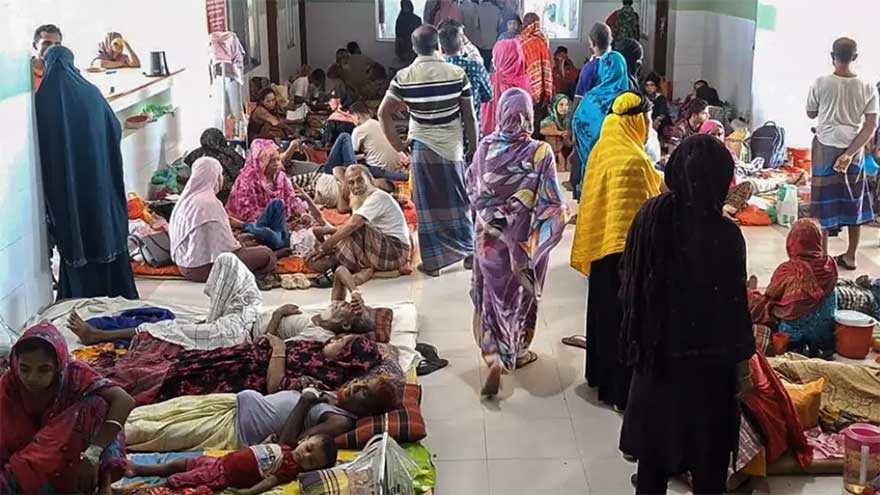Barisal, Bangladesh — Hospitals in Bangladesh’s southern coastal districts are overflowing with dengue patients, some forced to lie on floors as the mosquito-borne virus surges in regions where it was once rare. Experts blame climate change and a severe lack of clean drinking water for the spike, as stored rainwater creates ideal breeding grounds for disease-carrying mosquitoes.
The Barisal region has recorded nearly half of Bangladesh’s 7,500 dengue cases this year, with five deaths reported there—part of a national toll of 31 fatalities. While the numbers remain lower than 2023’s devastating outbreak (which killed over 1,700 people), health officials warn the situation is worsening. “This is the worst we’ve seen,” said Barisal health chief Shyamol Krishna Mondal, describing hospitals so overwhelmed that patients receive treatment on the floor.
For Rakibul Islam Rajan, 31, the outbreak turned personal when his wife, Azmeri Mona Lisa Zareen, died of dengue in early June. “She developed a high fever, her blood pressure collapsed—and then she couldn’t breathe,” he said. Now, their two-year-old daughter searches the house for her mother, unaware of the irreversible loss.
Dengue, once concentrated in urban areas, is now flourishing in coastal and rural zones due to erratic rainfall and water shortages. Kabirul Bashar, a disease expert at Jahangirnagar University, explains that stored rainwater in containers provides perfect mosquito breeding sites. “The water distribution system is almost absent,” he said, urging long-term solutions to prevent future outbreaks.
As Bangladesh grapples with the dual threats of climate change and weak infrastructure, the dengue crisis serves as a grim warning—without urgent action, more lives will be lost to preventable diseases.














